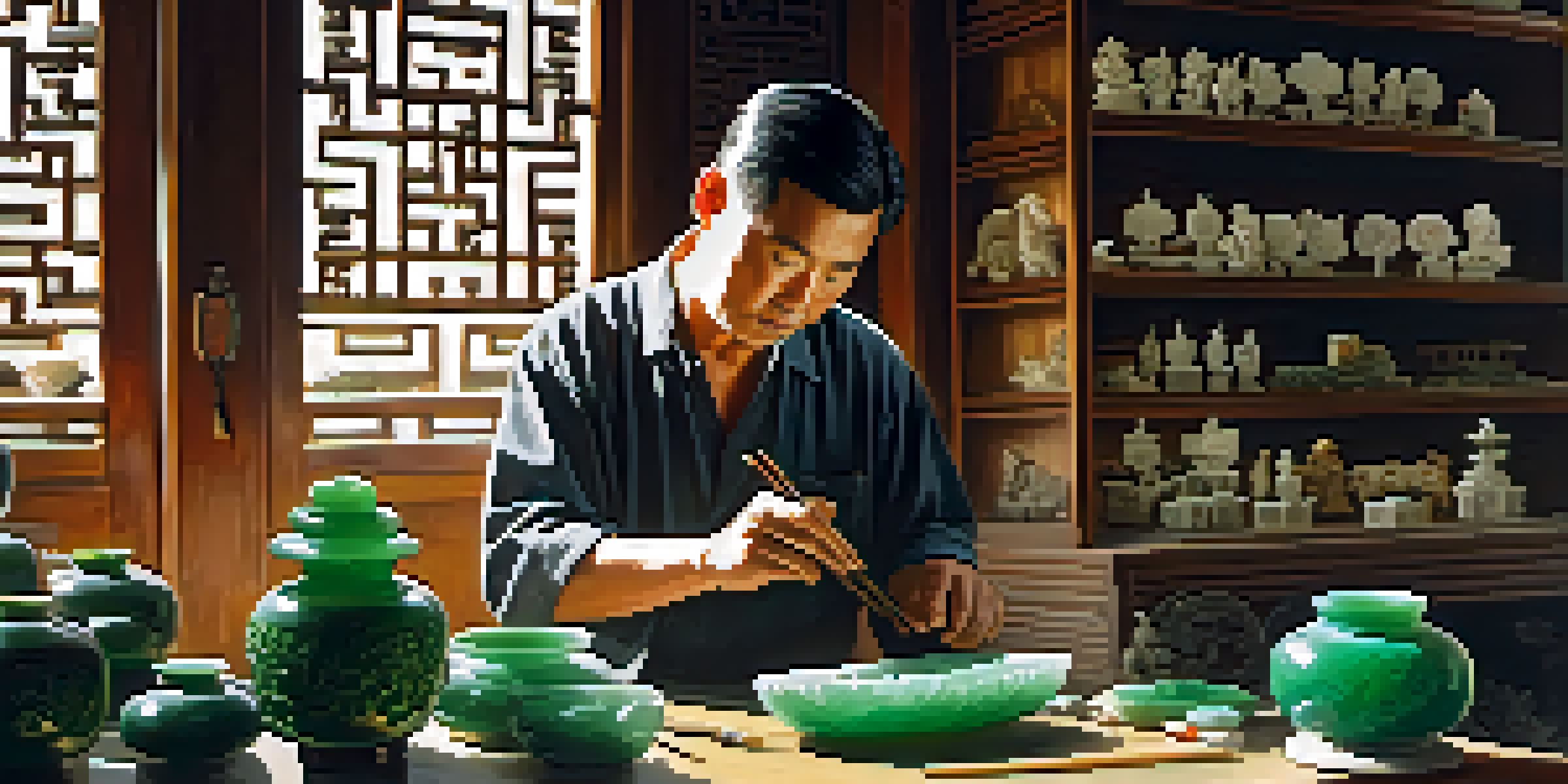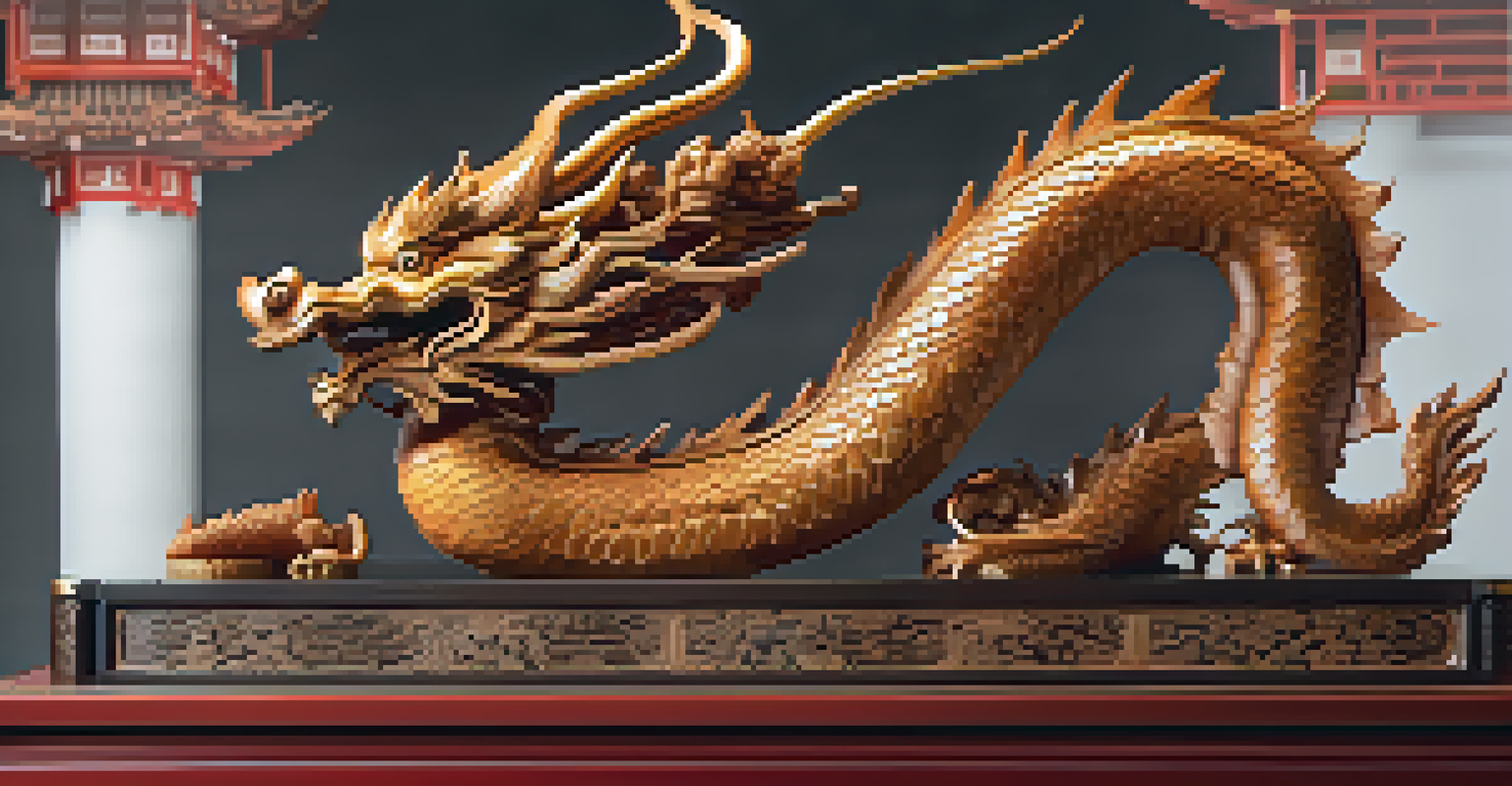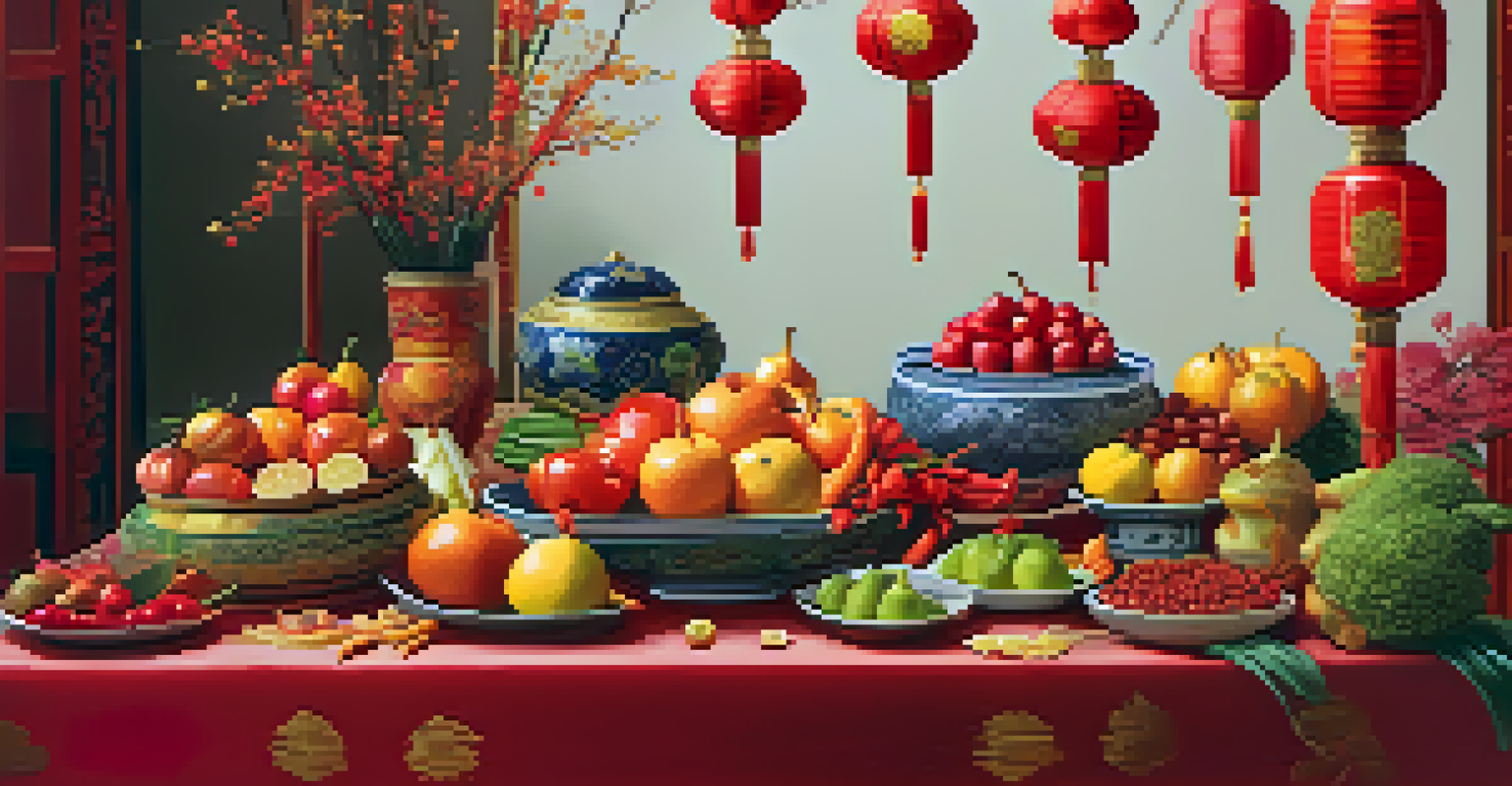Carving Techniques in Chinese Culture: A Storytelling Art

The Rich History of Chinese Carving Techniques
Carving in Chinese culture is not just an art form; it's a deep-rooted tradition that dates back thousands of years. This practice has evolved through dynasties, reflecting the social, political, and cultural changes of the time. From the intricate designs of jade carvings to wooden sculptures, each piece tells a story and showcases the craftsmanship of its creator.
Art is not what you see, but what you make others see.
Historically, carving was often associated with spirituality and the afterlife, as seen in tomb artifacts and religious symbols. The techniques were passed down through generations, with artisans honing their skills to achieve perfection. Each carving represents a unique blend of artistry and storytelling, making it a vital part of Chinese heritage.
Today, these techniques continue to be celebrated, with modern artisans integrating traditional methods into contemporary designs. The history of Chinese carving provides a fascinating backdrop for understanding the significance of this art form in both past and present contexts.
Traditional Materials Used in Chinese Carving
The materials used in Chinese carving are as diverse as the techniques themselves, each offering unique qualities and challenges. Jade, for instance, is highly prized for its beauty and durability, and it plays a central role in many traditional carvings. The process of working with jade requires skill and patience, making it a true labor of love.

Wood is another popular medium, favored for its accessibility and versatility. Carved wooden figurines often depict deities or mythical creatures, each imbued with symbolic meaning. The choice of wood can also affect the final piece; different types offer varying textures and colors that enhance the overall aesthetic.
Carving Reflects Cultural Heritage
Chinese carving techniques embody a rich history that intertwines artistry with spirituality and storytelling.
Other materials, such as ivory and stone, have also been used historically, though their use has declined due to ethical concerns. The selection of material is crucial, as it not only impacts the carving process but also the story that each piece conveys, highlighting the importance of connection between artist and medium.
Common Carving Techniques in Chinese Art
Chinese carving techniques are diverse, ranging from relief carving to three-dimensional sculptures. Relief carving involves creating a raised design on a flat surface, allowing for intricate details that can be appreciated from a distance. This technique is often seen in traditional architectural elements and decorative panels.
Every piece of art is a reflection of its maker, telling the story of their experiences and culture.
On the other hand, three-dimensional carving brings figures to life, allowing for a more immersive storytelling experience. This method showcases the artist's skill in creating depth and movement, often seen in religious statues or elaborate displays in temples. The craftsmanship involved in these techniques is a testament to the dedication of the artisans.
Additionally, techniques such as engraving and inlaying are also prevalent, adding layers of complexity to the artwork. Each method not only showcases the artist's technical skills but also enhances the narrative aspect of the piece, making every carving a unique story waiting to be told.
The Symbolism Behind Carved Artworks
In Chinese culture, carving is steeped in symbolism, with each piece often representing deeper meanings. For example, dragons symbolize power and strength, while phoenixes represent rebirth and beauty. These symbols are not just decorative; they tell stories that resonate with cultural values and beliefs.
The choice of subject matter in carvings can reflect wishes for prosperity, health, or protection. Carvings of animals or natural elements are also common, as they often embody specific traits admired in Chinese philosophy. This connection between art and symbolism creates a rich tapestry of meaning that enhances the value of each piece.
Symbolism Enriches Carved Artworks
Each carving is steeped in symbolism, conveying deeper meanings that resonate with cultural values and beliefs.
Moreover, the placement of carvings in homes or temples is also intentional, as it is believed to influence the energy and atmosphere of the space. Thus, every carving is not merely an object; it serves as a conduit for storytelling, tradition, and cultural identity.
Modern Innovations in Chinese Carving Techniques
As with many art forms, Chinese carving has not remained stagnant; modern innovations have breathed new life into traditional techniques. Contemporary artists are experimenting with new materials and methods while still honoring the rich history of their craft. This fusion of old and new has led to exciting developments in the art of carving.
Digital tools and technologies are now being integrated into the carving process, allowing for precision that was once unimaginable. Laser engraving, for example, enables artists to create intricate designs with remarkable accuracy, pushing the boundaries of what can be achieved in carving. This technological advancement opens up new possibilities for storytelling through art.
Additionally, many modern artisans are using social media platforms to showcase their work and connect with a global audience. This exposure not only promotes the art of carving but also invites dialogue about its significance in contemporary culture, ensuring that these age-old techniques continue to thrive in a rapidly changing world.
The Role of Carving in Chinese Festivals and Celebrations
Carving plays a significant role in various Chinese festivals and celebrations, often serving as a centerpiece of cultural expression. For instance, during the Lunar New Year, intricate carvings of fruits and vegetables are created to symbolize good fortune and abundance. These edible artworks not only delight the eyes but also encapsulate the spirit of the festivities.
Moreover, many festivals feature traditional performances that incorporate carved elements, such as dragon and lion dances. These performances are visually stunning, with beautifully carved masks and costumes that enhance the storytelling aspect of the dance. The artistry involved in these carvings adds depth to the cultural narratives being presented.
Modern Techniques Enhance Tradition
Contemporary artists are innovating traditional carving methods by incorporating technology and new materials.
In essence, carving becomes a vital part of the celebration, connecting the past with the present. It serves not just as an art form, but as a means of preserving and sharing cultural heritage, making each festival a living tapestry of stories and traditions.
Preserving the Art of Carving for Future Generations
As the world changes, preserving traditional carving techniques becomes increasingly important. Efforts are underway in many communities to pass down skills to younger generations, ensuring that the art does not fade into obscurity. Workshops and training programs are being established, focusing on both the historical significance and practical skills involved in carving.
Artisans are also collaborating with schools and cultural institutions to raise awareness about the importance of this art form. By integrating carving techniques into educational curriculums, children can develop an appreciation for their cultural heritage while learning valuable skills. This hands-on experience not only fosters creativity but also instills a sense of pride in their traditions.

Ultimately, preserving the art of carving is crucial for maintaining cultural identity. As each generation learns and adapts these techniques, the stories embedded in the carvings continue to evolve, ensuring that the rich legacy of Chinese carving remains vibrant for years to come.